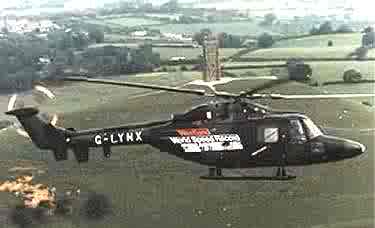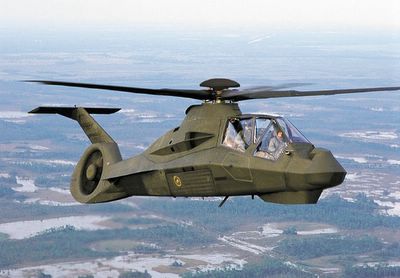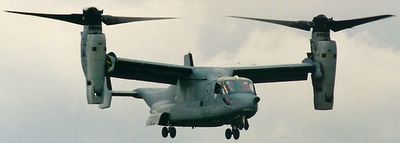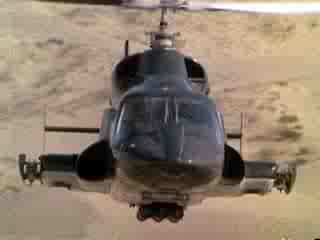Airwolf
What do Jessie Mach, Michael Knight and Stringfellow Hawke have in common? They were characters played by Rex Smith, David Hasselhoff and Jan-Michael Vincent in Street Hawk, Knight Rider and Airwolf respectively. These three shows filmed in the 1980s were probably among the most exciting action adventure serials ever aired on television.
While all 3 shows (with very catchy theme tunes) were exciting Airwolf was unique in that it added an aerial element to the whole concept of a high tech crime fighting machine. It featured a state of the art helicopter fitted with high tech weapons and gadgets and capable of supersonic speeds. It was also the show that first got me interested in helicopters and made me decide that I would one day get a helicopter pilots license (until of course I grew up and mortgage concerns got in the way..darn). This post as you would have guessed by now is about the helicopter.
Here is a brief history of the chopper. Around 2000 years ago some bored Chinese bloke (apparently called Ko Hung) who didnt have shows like Airwolf to keep himself entertained (and no girlfriend either) decided to attach some feathers around a stick to create a flying toy. Hung found out that when he rapidly spun the toy in his hands and let it go it would rise vertically and fly by itself for a few seconds. Overjoyed by his new invention he proudly displayed it to his mates who all thought it was totally cool. This became the Play Station 2 of their generation and came to be called the Chinese Flying Top.
Over the years that followed several people around the world envisaged a larger flying machine based on the principles of the chinese flying top. In the 15th century Leonardo Da Vinci studied the possibility of a human carrying helicopter. The word helicopter is derived from the Greek words helix (spiral) and pteron (wing). However it was not until the invention of the internal combustion engine and the advent of powered fixed wing flight that actual helicopter models were produced.
Unlike the Wright Brother's first flight there is no specific date or inventor to whom the first flight of the helicopter can be credited. However a Frenchman named Paul Cornu is credited with the first piloted rotary wing flight in 1907 when he reached a staggering altitude of 1 ft with his twin rotor craft. The long history of development of rotary wing flying machines around the world which eventually led to the modern helicopter is too detailed to go into in a simple blog post (and also too boring). I will however mention Igor Sikorsky who is credited with building the world's first practical helicopter the Vought-Sikorsky 300 in 1939.
Here is a little bit about how a helicopter flies. A conventional fixed wing aircraft flies due to the lift generated by the wings. A rotary wing aircraft or helicopter is not that dissimilar. Each blade of a helicopter is effectively a wing that generates lift as it goes around. However as the main rotor blades spin and generate lift they tend to spin the body of the helicopter in the opposite direction and hence the need for a tail rotor to compensate and provide yaw control. There are helicopters that use 2 sets of rotor blades each moving in opposite directions to cancel out the spin so they do not require tail rotors. There are also NOTAR (no tail rotor) helicopters that use a jet of air to provide yaw control and stability instead of a tail rotor.
Most modern helicopters use gas turbine or jet engines (from the Bell Jet Ranger to the Apache attack helicopter). Most people think jet engines are only fitted to aircraft but in addition to solely producing thrust to power an aircraft they can also be converted to use most of that power to drive propellers or rotors (turbo-shaft and turbo-prop engines).
The helicopter probably has more uses than any other flying machine ever invented. It is used for search and rescue, transport, sightseeing, fire fighting, traffic monitoring, news reporting, police surviellance, troop support, Medevac..the list is almost endless.
Here are some interesting helicopter facts:
1. The Fastest
The world speed record for a helicopter stands at 249.1 mph. This was set in 1986 in the United Kingdom by a modified British Army Westland Lynx helicopter. The helicopter neither looks fast nor does the speed seem all that high. A helicopter's forward speed is severely limited due to the increased stress on the blades at high speeds. As the forward speed of a helicopter increases the rotor blades start approaching supersonic velocities. At this point the stress and vibration levels and the power requirements drastically increase making any further speed increases difficult and dangerous (at least with current design and materials).

Westland Lynx
2. The Biggest
The Mil Mi-26 "Halo" is currently the biggest helicopter in the world. Built and first flown in 1977 by the Mil helicopter company in Russia this helicopter is currently used in military transport, fire fighter and medevac roles.

Mi-26
3. The Deadliest
The Boeing AH-64 Apache attack helicopter and the Boeing-Sikorsky RAH-66 Comanche stealth helicopter are probably the closest real world equivalents of Airwolf and Blue Thunder (although the Comanche project has now been cancelled).

Apache

Comanche
4. The Hybrids
The Bell-Boeing V22 Osprey tilt rotor is an example of a helicopter/aeroplane hybrid which takes off like a conventional helicopter and tilts the rotors forwards to fly like an aeroplane once in the air. Another unusual flying machine was the large Fairey Rotodyne which was a cross between an autogyro and a helicopter.

V-22 Osprey

Fairey Rotodyne
and finally......
5. Airwolf & Blue Thunder
A modified Bell 222 helicopter was used for the popular Airwolf TV series. Once the series ended the modifications were removed and the helicopter was sold to a German charter company. It crashed in the early 90s killing all on board.
2 modified Aerospatiale Gazelle helicopters were used for the Blue Thunder movie and TV series. After the Blue Thunder series ended one was sold to a salvage company and the other was sent to a hollywood museum somewhere in the States.

Airwolf

Blue Thunder
There ends my little story of the helicopter. Hope you enjoyed reading it.
Cheers
While all 3 shows (with very catchy theme tunes) were exciting Airwolf was unique in that it added an aerial element to the whole concept of a high tech crime fighting machine. It featured a state of the art helicopter fitted with high tech weapons and gadgets and capable of supersonic speeds. It was also the show that first got me interested in helicopters and made me decide that I would one day get a helicopter pilots license (until of course I grew up and mortgage concerns got in the way..darn). This post as you would have guessed by now is about the helicopter.
Here is a brief history of the chopper. Around 2000 years ago some bored Chinese bloke (apparently called Ko Hung) who didnt have shows like Airwolf to keep himself entertained (and no girlfriend either) decided to attach some feathers around a stick to create a flying toy. Hung found out that when he rapidly spun the toy in his hands and let it go it would rise vertically and fly by itself for a few seconds. Overjoyed by his new invention he proudly displayed it to his mates who all thought it was totally cool. This became the Play Station 2 of their generation and came to be called the Chinese Flying Top.
Over the years that followed several people around the world envisaged a larger flying machine based on the principles of the chinese flying top. In the 15th century Leonardo Da Vinci studied the possibility of a human carrying helicopter. The word helicopter is derived from the Greek words helix (spiral) and pteron (wing). However it was not until the invention of the internal combustion engine and the advent of powered fixed wing flight that actual helicopter models were produced.
Unlike the Wright Brother's first flight there is no specific date or inventor to whom the first flight of the helicopter can be credited. However a Frenchman named Paul Cornu is credited with the first piloted rotary wing flight in 1907 when he reached a staggering altitude of 1 ft with his twin rotor craft. The long history of development of rotary wing flying machines around the world which eventually led to the modern helicopter is too detailed to go into in a simple blog post (and also too boring). I will however mention Igor Sikorsky who is credited with building the world's first practical helicopter the Vought-Sikorsky 300 in 1939.
Here is a little bit about how a helicopter flies. A conventional fixed wing aircraft flies due to the lift generated by the wings. A rotary wing aircraft or helicopter is not that dissimilar. Each blade of a helicopter is effectively a wing that generates lift as it goes around. However as the main rotor blades spin and generate lift they tend to spin the body of the helicopter in the opposite direction and hence the need for a tail rotor to compensate and provide yaw control. There are helicopters that use 2 sets of rotor blades each moving in opposite directions to cancel out the spin so they do not require tail rotors. There are also NOTAR (no tail rotor) helicopters that use a jet of air to provide yaw control and stability instead of a tail rotor.
Most modern helicopters use gas turbine or jet engines (from the Bell Jet Ranger to the Apache attack helicopter). Most people think jet engines are only fitted to aircraft but in addition to solely producing thrust to power an aircraft they can also be converted to use most of that power to drive propellers or rotors (turbo-shaft and turbo-prop engines).
The helicopter probably has more uses than any other flying machine ever invented. It is used for search and rescue, transport, sightseeing, fire fighting, traffic monitoring, news reporting, police surviellance, troop support, Medevac..the list is almost endless.
Here are some interesting helicopter facts:
1. The Fastest
The world speed record for a helicopter stands at 249.1 mph. This was set in 1986 in the United Kingdom by a modified British Army Westland Lynx helicopter. The helicopter neither looks fast nor does the speed seem all that high. A helicopter's forward speed is severely limited due to the increased stress on the blades at high speeds. As the forward speed of a helicopter increases the rotor blades start approaching supersonic velocities. At this point the stress and vibration levels and the power requirements drastically increase making any further speed increases difficult and dangerous (at least with current design and materials).

Westland Lynx
2. The Biggest
The Mil Mi-26 "Halo" is currently the biggest helicopter in the world. Built and first flown in 1977 by the Mil helicopter company in Russia this helicopter is currently used in military transport, fire fighter and medevac roles.

Mi-26
3. The Deadliest
The Boeing AH-64 Apache attack helicopter and the Boeing-Sikorsky RAH-66 Comanche stealth helicopter are probably the closest real world equivalents of Airwolf and Blue Thunder (although the Comanche project has now been cancelled).

Apache

Comanche
4. The Hybrids
The Bell-Boeing V22 Osprey tilt rotor is an example of a helicopter/aeroplane hybrid which takes off like a conventional helicopter and tilts the rotors forwards to fly like an aeroplane once in the air. Another unusual flying machine was the large Fairey Rotodyne which was a cross between an autogyro and a helicopter.

V-22 Osprey

Fairey Rotodyne
and finally......
5. Airwolf & Blue Thunder
A modified Bell 222 helicopter was used for the popular Airwolf TV series. Once the series ended the modifications were removed and the helicopter was sold to a German charter company. It crashed in the early 90s killing all on board.
2 modified Aerospatiale Gazelle helicopters were used for the Blue Thunder movie and TV series. After the Blue Thunder series ended one was sold to a salvage company and the other was sent to a hollywood museum somewhere in the States.

Airwolf

Blue Thunder
There ends my little story of the helicopter. Hope you enjoyed reading it.
Cheers


